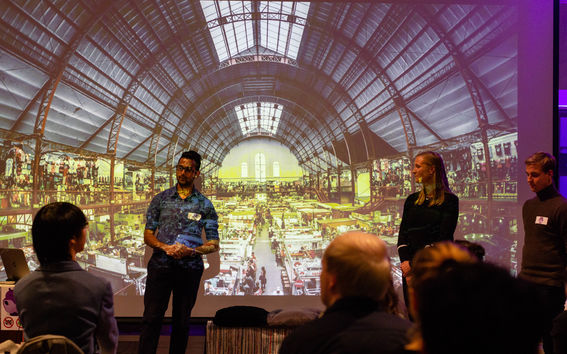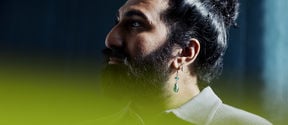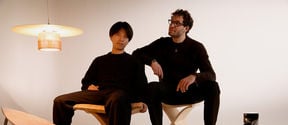Innovating in the IDBM Challenge course for the future of Helsinki and Copenhagen

The IDBM (International Design Business Management) master’s programme focuses on design from the point of view of methodology, ideas, and competitive advantage. The programme courses include business modeling, product and service design, technology, and innovation management. The IDBM degree programme is a joint teaching and research platform across all Aalto University's schools, and the School of Business is responsible for its coordination.
‘There is a lot of expertise at Aalto, so we at IDBM are very excited about networking both within and outside of Aalto communities. We are very happy to share our experience and best practices. We have a unique way of teaching and learning that may not work in all contexts, but we see this as continuous learning. We have received a lot of positive feedback from students on our interactive teaching where blended learning is a key factor’, says Miikka J. Lehtonen, Visiting Assistant Professor at IDBM.
Five UN Sustainable Development Goals chosen for the course
IDBM’s major studies (40 course credits) and minor studies (25 course credits) begin with the IDBM Challenge course, which gives students a feel for the multidisciplinary and multi-format degree programme. The programme’s blended learning course consists of 15 episodes and three podcasts, which many people from the Aalto community helped to produce and create. Script for the episodes was written by the course leader, Miikka J. Lehtonen.
Held in September, a total of 60 Finnish and Danish students attended the IDBM Challenge course, from which 14 multidisciplinary teams were formed. Danish universities represented in the course are all located in Copenhagen. Major part of the course was to think about how the UN's current challenges on sustainable development could be solved and what impact these solutions could have in five years. The student’s home cities of Helsinki and Copenhagen were chosen as case studies.
The UN’s Sustainable Development Goals aim to eliminate extreme poverty and secure the well-being of the environment in a sustainable way. Out of the 17 Sustainable Development Goals, the following five were selected for the course: 1. Eliminate poverty in all its forms from all over the world, 5. To achieve gender equality and to strengthen women’s and girls' rights and opportunities, 10. Reduce inequalities within and between countries, 11. Ensure safe and sustainable cities and resident communities and 12. Ensure durability of consumption and production practices.
Three intensive weeks
During the first week of the course, students visited various agencies such as the Finnish Immigration Service and organisations such as Plan International and heard about how they utilise design. The student teams used these visits as an inspiration for creating the foundations for their own solutions.
During the second week, students were asked to think about whom they are creating value for and in what form. Every Friday of the week a retrospective session was held where the students reflected on what had been done, what will be done in the future, and why.
During the last week, presentations skills were practised, and the course culminated in the Nordic Rebels night, which was jointly organised by the teams and held at the Games Factory. The evening progressed according to the Japanese presentation format, Pecha Kucha. The aim of this presentation format is to keep the presentations short, the level of interest high and allow many presenters to share their ideas within one night. Each team could present 20 images, each for exactly 20 seconds. The duration of one presentation was therefore 6 minutes 40 seconds. In the audience there were representatives from the cities of Helsinki and Espoo, and design companies, who showed interest in taking the students’ ideas forward.
‘With this course, we want to increase students' understanding that they really can influence things and come up with solutions that the society will benefit from’, says Miikka J. Lehtonen.
‘We want to continuously develop our course and the learnings we offer. We are keen on student feedback, we are sparring with Aalto's internal and external communities, and we are striving to move forward. We do not want to reinvent the wheel, but we are looking for new opportunities and profound learning experiences. We want to give IDBM graduates the best possible start to their careers.‘
IDBM competence is sought in demanding design jobs and students usually become employed as consultants, in product and service development, or as entrepreneurs.
Get to know the IDBM Challenge course and view its episodes:
http://www.nordicrebels.com
https://vimeo.com/289157999
IDBM Challenge 2017 Behind the Scenes video
More information about IDBM:
https://www.idbm.aalto.fi/
Photo: Jaakko Ranne
- Published:
- Updated:
Read more news

5 ways to train your creativity this Spring and Summer
To celebrate the United Nations World Creativity Day on April 21, we made a list of five tips to boost your creativity this Spring/Summer
A new way to do controlled experiments in medicine: simulate the control
Generative AI could augment randomized controlled trials.